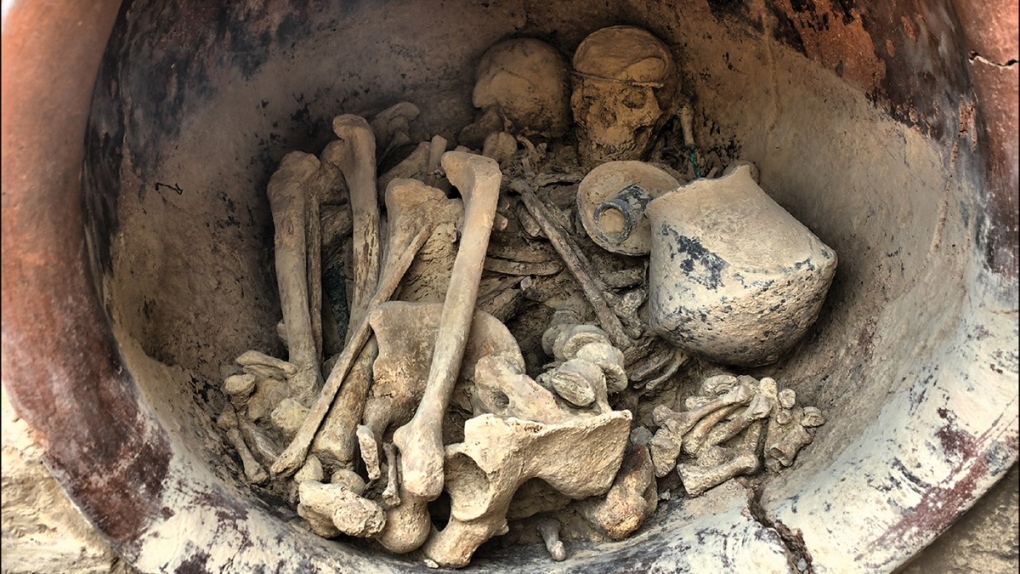A 3,700-year-old burial site suggests female rule in Bronze Age Spain
Archaeologists in Spain have determined that the 3,700-year-old remains of a woman found beneath a Bronze Age era ruin may well be the first case of an ancient female ruling elite in Western Europe.

The discovery at the La Almoloya site in Murcia, Spain, dates to around 1,700 B.C., according to newly published research in the British journal Antiquity.
The woman’s potential status as a ruler also means that the ruin her body was buried beneath is likely the first palace found in Western Europe dating from the Bronze Age, which lasted from about 3,200 -1,200 B.C.
The Almoloya site was first discovered in 1944 and is believed to be the cradle of the El Argar society, which flourished between 2,200 and 1,550 B.C. in the southeast part of what is now Spain.
They were one of the first societies in the region to use bronze, build cities, and erect monuments. El Argar is also considered to be an early example of a class-based state, with divisions in wealth and labour.
The woman’s remains, discovered in 2014, were buried with a man and several valuable objects, most notably a rare silver crown-like diadem on her head.
Further analysis of the remains and artefacts over the last few years led researchers to their conclusions about the significance of the find.
“These grave goods has allowed us to grasp the economic and political power of this individual and the dominant class to which they belonged,” researchers said in a press release.
The remains of the woman and man were found in a large jar located beneath the floor of a room. Researchers believe the woman was 25-30 years old and the man was 35-40 when they died around the same time in the mid-17th century B.C.
Genetic analysis indicates they had children together, including a daughter buried elsewhere on the site.
But it was the valuable objects, and the diadem, in particular, that suggested the political importance of the woman.
Also significant was the location of the remains beneath a room in a large building complex that seems to have had both residential and political functions, including a room with benches that could hold up to 50 people that researchers nicknamed the ‘parliament’.
This combination of residential and political use means the building meets the definition of a palace and would make it the first discovered that dates from the Bronze Age in Western Europe.
“The La Almoloya discoveries have revealed unexpected political dimensions of the highly stratified El Argar society,” the researchers said.
The building was destroyed by fire not long after the woman was interred, they said.
